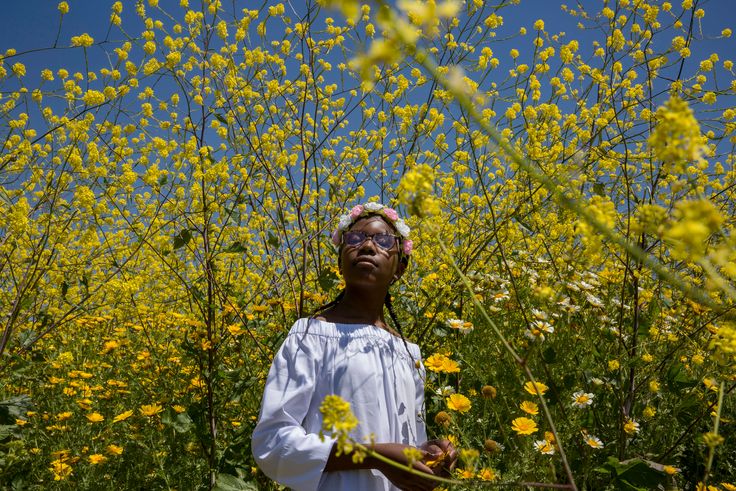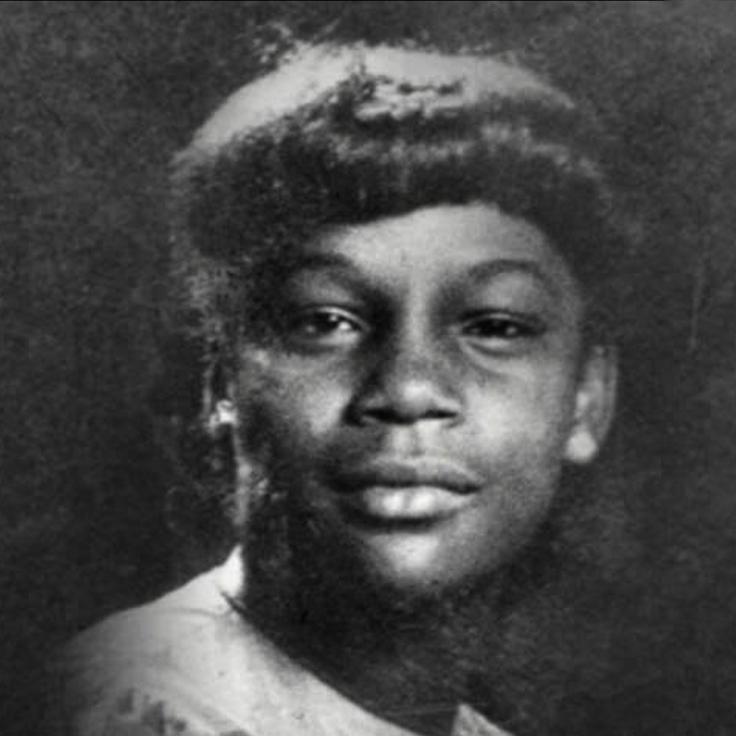Latasha Harlins was caring, responsible, passionate and goal-oriented. She had dreams of becoming a lawyer and building businesses to help her community. She also had a big heart. So big that the day that she met her best friend, Ty, was the same day she saved her from drowning at the hands of a group of kids trying to take advantage of her.
Harlins was a 15-year-old girl who had her whole life ahead of her. And it took the world nearly 30 years after her death to see that.
For far too long, her story has been limited solely to her tragic death at the hands of a Korean American liquor store owner who wrongly accused her of stealing a bottle of orange juice that cost a mere $1.79 and shot her in the back of the head. For nearly 30 years, her story has been told through the lens of trauma as the catalyst for the Los Angeles riots of 1992. Harlins’ story is more than her pain, but for decades, the only public information available about her life was about her death.
Filmmaker Sophia Nahli Allison adjusted that lens when she went on a mission in 2016 to uplift Harlins’ life and shine a necessary light on the beauty of Black girlhood. The result was “A Love Song For Latasha,” a 19-minute love letter to the Black teenage girl who deserved so much better from us all.
For too long, Latasha was just a headline, Latasha was just someone that existed within the video footage of her death.
Sophia Nahli Allison
The film, which debuted at the 2019 Tribeca Film Festival and is available to stream on Netflix, is nominated for an Academy Award for Best Short Documentary. That news was announced a day before the 30th anniversary of Harlins’ death. Allison worked with Netflix to get Harlins her first and only mural in Los Angeles for what would have been her 45th birthday on Jan. 1, 2021.
Allison, a Los Angeles native, was only about 3 years old when Harlins was killed. Her primary memories around that time involved the aftermath of Rodney King’s beating and the uprising that ensued thereafter. As someone whose work centers Black women and girls, she was shocked that she didn’t learn Harlins’ story until later in life when she was a young adult.
The filmmaker told HuffPost that she began thinking about her own memories of Black girlhood, how special those memories are, and the unspoken shift that seems to happen to all Black girls at age 15. For Allison, it was the death of her father. She thought about Harlins, who was not only robbed of her life but also of her own narrative, even down to misinformation about the day she was born.
“Just before the film came out on Netflix, her birthday was always listed incorrectly online,” Allison told HuffPost. “The year and the date was always incorrect. So just what happens when Black women and Black girls are no longer able to be in control of their archive, of their narrative, and wanting to really interrogate that, and wanting to dismantle all the powers that have prevented us from having that need to speak.”
Up until last year, the main voices the public heard speak life into Harlins’ story were those of her cousin Shinese and her aunt. Harlins’ mother, Crystal Harlins, had been tragically killed at a nightclub in 1985. Allison reached out to Harlins’ best friend and cousin, Ty and Shinese, via Facebook to ask them if they’d want to tell Harlins’ story.
“I let them know I wanted to create a film that really reimagined her life and moved us away from her trauma, and I wanted the story and the narrative to come from their perspective, from their experience, and really have that needed healing process that we all go through together,” Allison said. She also let them know that if they refused, she wouldn’t even pursue the documentary.
After a few months, Shinese agreed. Then Ty joined a few months following that. Trust was a key component in the process. Shinese and Ty weren’t subjects in the filmmaking process, Allison made clear. She intentionally removed any hierarchy. They were her sisters. They laughed together, cried together and formed a group chat. The filmmaker and her team always made a point to prioritize Ty’s and Shinese’s care in the process.
“Ty would always tell me, Latasha’s going to make you work for this, and she really did, but I understand why,” Allison said. “For too long, Latasha was just a headline, Latasha was just someone that existed within the video footage of her death. To finally make this agreement with Latasha that we want to go on this journey with you, to retell this story, to reverse it, to be a part, to have Ty and Shinese be a part of the journey with us, we had to do the work that was required for it.”
A big part of that work was figuring out the visual storytelling. Aside from the video of her death, which does not appear in the documentary, archival footage and photos of Harlins were extremely limited. That posed a challenge for Allison and her team to retell her story. No background footage meant their team had a tall task of creating their own blueprint and redefining what visual storytelling can be for documentaries.
I’m often so conflicted with this idea: How do we, as Black women, make folks care? And I don’t think that’s our responsibility anymore.
Allison
“[We were] wanting to return this idea of how Black folks always told stories, thinking about the Black arts movement and decolonizing this Western idea of storytelling and really embracing how Black women have always told stories, how Black women have always hold space for one another,” Allison said.
Footage of Harlins, Ty and Shinese’s stomping grounds made up the elements of the film: the paths they’d take, the bus routes they’d ride, the places they’d play. Young Black girls from South Central Los Angeles made appearances to help retell Harlins’ story.
Often, Allison and creative producer Janice Duncan would walk around Harlins’ neighborhood just to feel the energy and spirit of the 15-year-old. Allison called the finished product a “spiritual archive.” Her small team, including creative producer Fam Udeorji, Aubrey Aden-Buie and Elisa Gambino, was intentional. When Allison felt stuck, she would write a letter to Harlins, always engaging with her spirit.
“Everyone that was a part of this understood the importance of — we’re all coming together to retell Latasha’s story, we’re all coming together to lift up Latasha, to hold these Black women, and also to allow South Central to continue to heal through this,” Allison said.

Allison said it was eye-opening to see how many Black women in the community hadn’t gotten the opportunity to heal from Harlins’ death until watching the film.
“There have been many Black women I’ve spoken to who told me until they saw the film, they didn’t realize how much they carried Latasha’s death, how much they had to carry the visual of seeing Latasha killed,” she said. “So what did it mean for us to undo all of that and say, ‘Well, here’s a new archive for us to remember Latasha.’ Because for me, I was really inspired by the history of Black folks having oral storytelling, oral history, when so much about archive has been erased or hasn’t been properly preserved.”
Ty and Shinese found healing through this film as well. Ty, who was supposed to go to law school with Harlins, picked back up on the last few credits of her criminal justice degree when the film began making its festival rounds. Shinese has built on the foundation that her mother, Denise, laid with the Latasha Harlins Justice Committee by stepping in to lead.
It’s taken nearly three decades for the world to acknowledge the fullness of Harlins’ life, honor her appropriately and bring healing to a community. Unsurprisingly, that is because a Black woman did the work to make it happen. Through Allison’s film, people can see the intimate joy Harlins, Ty and Shinese shared as children. They held each other down in a way only Black sisterhood allows. They were each other’s sacred space.
“For me, that was the most beautiful thing to witness,” she said, “that we, as Black folks and Black women, we experience these traumatic moments, but we have a secret language and a sisterhood that will allow us to move through that, and will allow us to heal, that will allow us to feel held and seen with each other.”
Allison hopes to encourage other Black girls to take hold of their archives and narratives as well. With Netflix, she’s been able to partner with A Long Walk Home, a nonprofit organization in Chicago that centers Black girls, to guide students in creating their own art in response to the film. She said that her priority is making sure Black girls know the value of defining their own story.
“I’m often so conflicted with this idea: How do we, as Black women, make folks care? And I don’t think that’s our responsibility anymore,” the Oscar nominee said. “It should never have been our responsibility. So I want Black women and Black girls to just continue holding space for one another and telling their story and reimagining their archive and their narrative, and knowing the agency they hold and building their future.”

